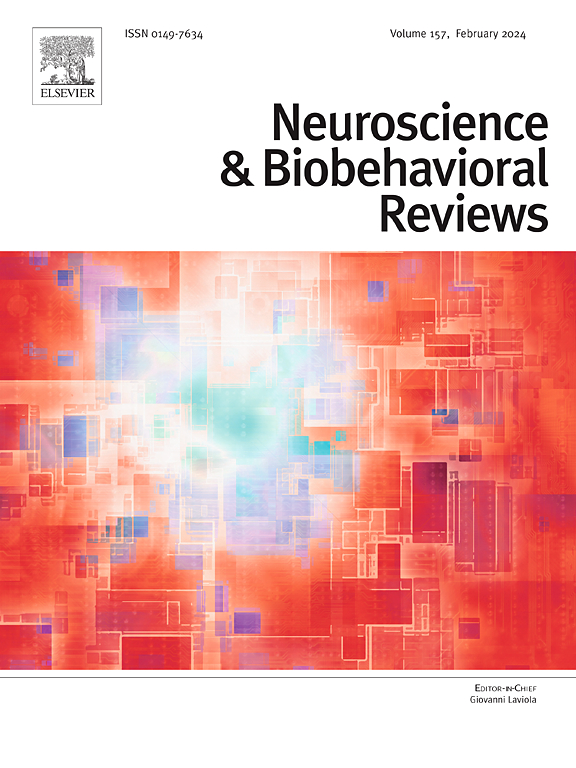丛神经:通过神经调节和脑病理导航。
IF 7.5
1区 医学
Q1 BEHAVIORAL SCIENCES
引用次数: 0
摘要
丛蛋白是一个跨膜受体家族,在神经发育、轴突引导、神经元迁移、突触发生和电路形成中发挥着不同的作用。信号蛋白是一类分泌蛋白和膜蛋白,作为丛蛋白受体的初级配体。信号蛋白通过调节轴突生长、神经元定位和突触连接等过程在中枢神经系统(CNS)的发育中起着至关重要的作用。各种类型的信号蛋白,如sema3A、sema4A、sema4C、sema4D等,在脑部疾病的发生中起着至关重要的作用。同样,各种证据表明丛蛋白受体有四种类型:丛蛋白A、丛蛋白B、丛蛋白C和丛蛋白d。丛蛋白已成为神经发生、神经元发育和连通性的重要调节因子。当与信号蛋白结合时,这些受体触发两个主要的网络级联反应,即Rho和Ras GTPase网络。神经丛蛋白网络失调与许多脑部疾病有关,包括自闭症谱系障碍(ASD)、精神分裂症、阿尔茨海默病(AD)、帕金森病(PD)等等。本文综合了分子、细胞和动物模型研究的结果,阐明了丛蛋白参与各种脑部疾病发病的机制。本文章由计算机程序翻译,如有差异,请以英文原文为准。
Plexins: Navigating through the neural regulation and brain pathology
Plexins are a family of transmembrane receptors known for their diverse roles in neural development, axon guidance, neuronal migration, synaptogenesis, and circuit formation. Semaphorins are a class of secreted and membrane proteins that act as primary ligands for plexin receptors. Semaphorins play a crucial role in central nervous system (CNS) development by regulating processes such as axonal growth, neuronal positioning, and synaptic connectivity. Various types of semaphorins like sema3A, sema4A, sema4C, sema4D, and many more have a crucial role in developing brain diseases. Likewise, various evidence suggests that plexin receptors are of four types: plexin A, plexin B, plexin C, and plexin D. Plexins have emerged as crucial regulators of neurogenesis and neuronal development and connectivity. When bound to semaphorins, these receptors trigger two major networking cascades, namely Rho and Ras GTPase networks. Dysregulation of plexin networking has been implicated in a myriad of brain disorders, including autism spectrum disorder (ASD), Schizophrenia, Alzheimer's disease (AD), Parkinson's disease (PD), and many more. This review synthesizes findings from molecular, cellular, and animal model studies to elucidate the mechanisms by which plexins contribute to the pathogenesis of various brain diseases.
求助全文
通过发布文献求助,成功后即可免费获取论文全文。
去求助
来源期刊
CiteScore
14.20
自引率
3.70%
发文量
466
审稿时长
6 months
期刊介绍:
The official journal of the International Behavioral Neuroscience Society publishes original and significant review articles that explore the intersection between neuroscience and the study of psychological processes and behavior. The journal also welcomes articles that primarily focus on psychological processes and behavior, as long as they have relevance to one or more areas of neuroscience.

 求助内容:
求助内容: 应助结果提醒方式:
应助结果提醒方式:


